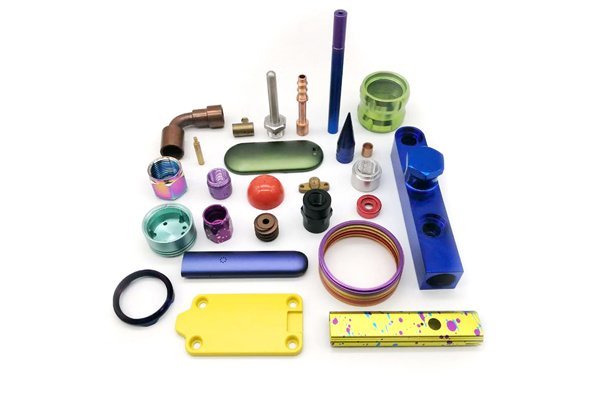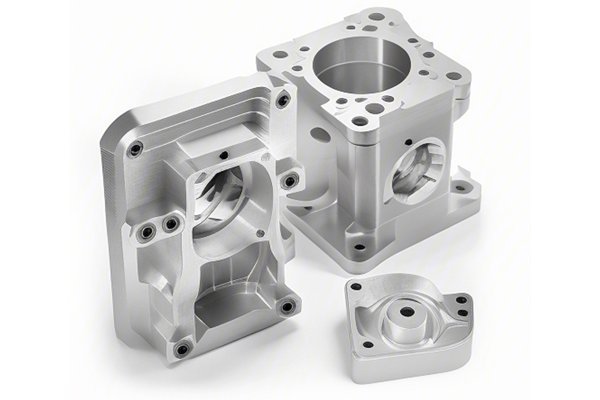*
In the ever-evolving landscape of manufacturing, Computer Numerical Control (CNC) machining stands out as a revolutionary force that has transformed how products are conceived, designed, and brought to life. Companies worldwide have recognized the efficiency, precision, and scalability that CNC machining offers. YL Machining, an industry leader, strives to provide cutting-edge solutions that keep pace with technological advancements and meet the precise needs of our clients. In this comprehensive article, we will delve deep into the intricacies of CNC machining, highlighting its technological aspects, global comparisons, material considerations, and insightful practices to optimize your machining processes. Our journey through this topic aims to leave you informed, inspired, and ready to harness the power of CNC machining.
—
Chapter 1: The Foundation of CNC Machining
1.1 What is CNC Machining?
At its core, CNC machining is an automated process that utilizes pre-programmed software to control machine tools. This includes everything from lathes and mills to routers and grinders. Unlike traditional machining that relies heavily on manual input, CNC machining allows for higher accuracy and repeatability.
1.2 Historical Context
CNC machining has roots dating back to the 1940s and 50s when the need for precise machining grew rapidly post-World War II. Initially developed for the aerospace and automotive industries, it now permeates various sectors, including medical, consumer electronics, and even arts and crafts.
—
Chapter 2: The Technological Landscape of CNC Machining
2.1 Advances in CNC Technology
The world of CNC machining is in a perpetual state of evolution. With advancements in software, sensors, and automation, businesses now have the ability to manufacture parts with intricate designs that were once considered impossible.
2.1.1 Software Innovations
Software platforms such as CAD (Computer-Aided Design) and CAM (Computer-Aided Manufacturing) have reinvented how designs are conceptualized and implemented. These tools provide unprecedented control over machinery and enable designers to visualize and refine concepts before physical production.
2.1.2 Integrated IoT Solutions
The Internet of Things (IoT) has further enhanced CNC machining by enabling real-time monitoring of machines. This capability allows for predictive maintenance, effectively reducing downtime and increasing overall efficiency.
2.2 Global Comparisons: Technology and Cost
In analyzing CNC machining practices, two dominant players emerge—China and the West (namely Europe and the United States).
2.2.1 China: Revolutionizing Cost-Effectiveness
China has established itself as a powerhouse in CNC machining, primarily due to lower labor costs, an abundance of raw materials, and significant governmental investment in manufacturing technologies.
Products manufactured in China often benefit from cost advantages, allowing clients to produce high-quality components at competitive prices. However, the real challenge lies in ensuring that quality is not compromised.
2.2.2 U.S. and Europe: Echoes of Quality
Contrastingly, machining operations in the United States and Europe frequently emphasize quality and innovation over sheer cost-efficiency. While it may be more expensive to produce products in these regions, businesses often invest in high-tech machinery and skilled labor to maintain high standards and advanced technological capabilities.
2.3 of Technological Landscape
Technology in CNC machining is a double-edged sword. On one side, cost-effectiveness reigns supreme; on the other, quality and innovation drive premium markets. Both landscapes offer a unique perspective that influences decision-making processes in manufacturing.
—
Chapter 3: Material Considerations in CNC Machining
3.1 Common Materials
CNC machining works with various materials, each presenting its unique set of challenges and opportunities.
3.1.1 Metals
Metals such as aluminum, brass, stainless steel, and tool steel are widely used due to their durability and mechanical properties.
3.1.2 Plastics
Plastics like ABS and polyurethane (PU) have become popular due to their versatility and lower cost.
3.2 Choosing the Right Material
Selecting the right material can significantly impact the performance and durability of the final product. Factors to consider include:

—
Chapter 4: Optimizing CNC Machining Processes
4.1 Process Optimization Techniques
For enterprises looking to improve their CNC machining operations, process optimization is key to enhancing productivity and reducing costs.
4.1.1 Tool Selection
Choosing the right tools for CNC machining is vital. The wrong tool can lead to increased wear, higher rejection rates, and reduced quality. Understanding the types of tools available and their respective applications can vastly influence outcomes.
4.1.2 Cutting Parameters
Optimizing cutting speed, feed rate, and depth of cut is crucial in ensuring efficient material removal while maintaining the quality of the finished product.
4.1.3 Innovative Techniques
Investing in multi-axis machining and adaptive machining technologies can help create complex geometries while improving overall cutting efficiency.
—
Chapter 5: Navigating Challenges in CNC Machining
5.1 Common Issues and Solutions
Although CNC machining offers numerous advantages, it isn’t without challenges that can thwart productivity.
5.1.1 Thermal Expansion and Material Deformation
Material deformation is a common issue resulting from temperature fluctuations during machining. To mitigate these problems:
5.1.2 Tool Wear and Breakage
Over time, tools can wear down, leading to reduced precision and quality.
—
Chapter 6: Global Perspectives
6.1 The Future of CNC Machining
The landscape of CNC machining will be shaped by technological innovations, changing consumer demands, and sustainability efforts.
6.2 The Role of Human Expertise
While automation takes center stage, the indispensable need for skilled personnel remains. Human intuition and expertise play a crucial role in overseeing CNC operations, interpreting data, and making complex decisions that machines alone can’t handle.
—
CNC machining stands at the crossroads of technology, craftsmanship, and innovation—a synthesis that shapes modern manufacturing. As industries continue to strive for efficiency and excellence, companies like YL Machining lead the charge with a commitment to quality, innovation, and customer service. By understanding the nuances of CNC technology, the diversity of materials, the intricacies of optimization, and the challenges that lie ahead, we empower ourselves to forge a successful manufacturing future.
In an era characterized by rapid technological advancement, staying informed is not merely beneficial; it’s imperative. Harnessing knowledge, embracing change, and fostering a culture of adaptability will lay the foundational blocks for success in the world of CNC machining.
Let’s explore the world of CNC machining together!*
—
This article serves to equip you with essential insights, advancing the understanding of CNC machining within the context of YL Machining’s dedication to quality and innovation. With the right knowledge, tools, and approach, you can elevate your CNC machining processes and contribute positively to the global manufacturing landscape.






